How to choose a Perfect Camera Lens for Landscape Photography
Figuring out which camera lens for landscape photography to get can feel like pulling teeth. Focal length, zoom vs prime, quality, brand are just some of the factors that come into play when you are trying to get that perfect camera lens. And asking for help in choosing a perfect camera lens for landscape photography on social media will likely leave you more confused than ever before. The whole process of getting a new camera lenses for landscape photography can seem very overwhelming.
But it doesn’t have to be this way. Let’s break down the process of selecting a perfect camera lens into two simple steps: Choosing the correct focal length & Looking at price, performance & quality trade offs.
#1: Right Focal Length for Landscape Photography
Wide Angle Lenses
The most obvious choice for landscape photographers is a wide-angle lens and something comparable to the 16-35 range. There are surely wider options, but for general purposes we use the more popular ranges.
There are many factors to consider when trying to pick the perfect wide-angle lens. Obviously, the overall image quality of the lens is quite important. Are the images sharp from corner to corner throughout various apertures? Are colors being portrayed accurately? What about chromatic aberration, auto focus, lens coma? These are all more technical things to consider, but what about general aspects of the camera lens itself?
One of the lenses currently in my bag is the Tokina 16-28mm f2.8. This lens is of tremendous value to me (it’s only around $600 and comes in various mounts), but it is by no means the perfect wide-angle lens. It will eventually be replaced (*currently shooting with the Tamron 15-30mm f2.8). I do a good amount of research on various websites to read reviews on any gear I purchase; but one of the best things you can do if you are undecided is to rent a lens. Both lensrentals.com and borrowlenses.com give the option to try before you buy.
Normal & Telephoto Lenses
If don’t shoot super wide, then you are probably using a zoom lens, trying to better isolate your subject. The next two lenses in most camera kits are the 24-70mm and 70-200mm ranges. Surprisingly, I currently don’t own a mid-range like a 24-70mm, but it is on my list of lenses to acquire (maybe I’ll have one by the time this article is available). The 24-70mm is a great general-purpose zoom range that can be used wide or zoomed-in. The most popular variations of these lenses come with a fast 2.8 aperture or a modest f4 aperture. If you don’t shoot much in low light, then the f4 option is typically the better choice. They are lighter and typically cheaper.
With the 70-200mm range, things can get a little more interesting. Like the 24-70mm, this medium telephoto zoom is usually offered with a fast 2.8 aperture or smaller f4. For landscape purposes, I prefer the f4 version as my camera is typically mounted to a tripod. I can forego longer exposures and keep my pack weight down. However, if you photograph wildlife, a faster and heavier f2.8 version may serve you well. Keep in mind that there are also many variations of these types of lenses. Some may include image stabilization which kicks the price around quite a bit for this range. Again, many of the third-party brands produce excellent versions of these two popular focal lengths; but be sure to figure out what features are most important to you.
Super Telephoto Lenses
Most landscape photographers seem to stop at the 200mm mark, although longer focal lengths can create stunning landscape images. While it is certainly more popular for wildlife photographers to include this range, 200-600mm can now be thought of as a landscape lens. Both Sigma and Tamron offer 150-600mm lenses as well as 100-400mm lenses at a pretty good price.
The good thing about these lenses is that, if you really want to include wildlife in addition to your landscape images, you now have the range to photograph those wild animals at a relatively safe distance. As it pertains to wildlife photography, it’s not the best lens to use as it is quite slow in terms of aperture (ranging from 5.6-6.3 beyond 400mm), though it still does the trick in good light. They are also quite bulky and heavy lenses that often require their own case. This makes them difficult to hike with unless you are training to be a Sherpa (mostly pertaining to the 150-600mm).
Having said that, it does open a new perspective for landscapes. You can get tighter crops of a scene and take grand scenic photos and essentially turn them into intimate abstracts. I’ve found myself going for the longer lens more recently for my landscape images as it gives you the chance to be a little more creative and see things a bit differently. These larger lenses usually have image stabilization and zoom locks to prevent the lens from “creeping” out when not in use.
Some lenses like the 800mm f5.6 super telephoto lenses are not quite economical to own for most. However, you might want that reach for a specific shot in mind or trip coming up. This is where renting a lens is ideal. No need to pay thousands of dollars for some gear that will be temporarily used. The best part is, most rental companies will allow you to purchase your rental outright if you love it enough. Nothing like being able to try before you buy.
#2: Quality, Performance & Price
Image Quality
The first thing you should want to look into is the image quality of the lens. I tend to be someone who reads plenty of reviews and articles on any gear I may invest. You may find a lens that is kind to your wallet, but what makes this lens cheaper than another of the same caliber? Lens reviews are a great way to figure out if the lens you want the one you should buy. Be sure to look for things like sharpness, build quality, weather sealing and overall performance of the lens.
Things that I look for in any lens I purchase are edge to edge sharpness. Does this lens have sharp edges and a sharp center point wide open, or does the lens have soft and slightly out of focus edges. Often times, stopping down the lens can correct this issue, but if you buy an f2.8 lens vs an f4 lens, you might want that extra stop you invested in. Chromatic aberrations can also be a factor in deciding what lens to purchase. For me, this is not as big of an issue these days as it is something that can be corrected quickly with the click of a button in Photoshop.
Camera Lens Build Quality
I also prefer my lenses to feel durable and solid rather than something that feels like it will fall apart with a slight bump. If you are looking for weather sealing and metal construction, look to spend a little extra. If you don’t find yourself photographing in adverse conditions like rain, snow, sandstorms, etc, then a lens with plastic construction may work for you. Most lenses with weather sealing will not protrude from the lens barrel. This helps avoid dust and moisture creeping inside of your lens and potentially ruining the optics inside. While I always prefer lenses that do not extend from the lens barrel, I do own a couple that I have to be a bit more careful with when out in the field.
Maximum Aperture of Camera Lens
If you shoot any astrophotography landscape images, you likely want a fast, wide-angle lens. There are many great options available from different brands, but you likely want to start by looking at a lens with a maximum aperture of f2.8 or faster. This allows you to gather more light in an image rather than having to double up on ISO speeds which keeps your image cleaner. There are faster lenses, mostly prime lenses, that have maximum apertures of f1.8 or even f1.4. These types of lenses usually have a specific purpose and focal length; if a super-fast lens is what you want, be sure to figure out what focal length you want and how fast you really need. Many third-party brands now make excellent prime lenses, so look at brands other than what is on your camera (confirm that it is compatible with your camera brand first!).
Something to consider with these faster lenses is that they are much heavier than lenses with smaller apertures (such as f4). If there is no night photography in your plans, you may only need something that has a maximum aperture of f4. Oftentimes these lenses are cheaper than those with a fast aperture, but it is very dependent on focal length. Canon’s 11-24mm f4L is listed around 3k; Sigma has a 12-24mm f4 that is half the price and the quality is quite good. Canon also has a 16-35mm f4L that priced around 1k.
Image Stabilizer for Landscape Photography
The majority of lenses these days come with some sort of images stabilization system indicated by abbreviations like IS, OS, VR. Surprisingly, one of my personal favorite lenses and easily the lightest in my pack, is my Canon 70-200mm f4. This lens does not have Image stabilization, but they do offer a stabilized version. The non IS version is significantly cheaper and lighter weight than with it. Since I use this lens tripod mounted 95% of the time, Image stabilization isn’t as necessary for me.
Every other lens I own has a form of Image Stabilization including my ultra-wide lens. This certainly comes in handy for when using a tripod is impossible. Although I do not use the IS of this lens as much as others, it is nice to know that it is there to use when needed. For smaller lenses with IS, it is always best to turn the stabilization off when using a tripod. When the IS is on and the camera is tripod mounted, the lens may try to essentially think for itself and the components inside will still be moving causing slightly blurry images.
The lens I almost exclusively keep the IS on is my Sigma 150-600 even when tripod mounted. There can be some debate about what works and what doesn’t, but from my personal experience with this lens, I tend to get slightly sharper images tripod mounted with the IS on. This all depends on shooting conditions and technique as well. Since I hand hold this lens often for wildlife, it is almost never turned off. Some of the expensive super telephoto lenses have IS features that will detect if it is mounted on a tripod so you don’t have to worry as much about turning it on or off.
Image stabilized lenses can also take up battery life, while not much, it is certainly something to consider. If you exclusively shoot without a tripod and rely on IS, you may notice a relatively significant difference. If you shoot mostly on a tripod, then you likely won’t notice much if any difference in battery performance.
Native vs Third Party Lenses
For those on a budget and looking for comparable image quality to native camera lenses, third party lenses can be a great option. Many years ago, most would scoff at the idea of putting a non native lens on their brand name camera. However, these brands have come a long way in terms of quality and even sometimes performing better than native glass. Both Sigma and Tamron are the main third party lens manufactures that create incredible quality lenses. Keep in mind, not every lens will be a gem, so it is still best to read up on these lenses to ensure they are the right fit for you.
The main benefit to a third party lens is the price. They are often significantly cheaper than the native lenses. For reference, Canon’s newest EF 70-200mm f2.8 will run you $2,100 new, but Sigma’s version would cost you just under $1,500. Both offer great build quality and neither lens protrudes from the barrel. Some of the key differences are size (the Canon is a bit smaller and lighter), filter thread size (Canon 77mm, Sigma 82mm) and minimum aperture (Canon f32, Sigma f22). Are these differences enough to justify the price difference? That is ultimately up to you.
Focusing speed on third party lenses isn’t something you have to worry too much with depending on the lens. Your standard lenses (think 16-35mm, 24-70mm, 70-200mm) will likely be up to par with the focusing speeds of native lenses. This can of course vary based on the specific lens, but from most reviews, native lenses will typically have the fastest and most accurate focusing speeds. Lenses like the Sigma 150-600mm Contemporary (which I own), are not the fastest when it comes to focus speed and certainly not comparable to any prime telephoto lens. However, I have been able to work with the lenses limitations for what it offers.
When looking at third party lenses, always be sure that when you are purchasing that you purchase the correct mount for your camera. This is one of the added benefits of third party lenses as well. You can get the same lens for almost all the major camera manufactures.
As with any gear, be sure to do as much research as possible before making your final decision. I recommend having at least the 16mm-200mm range covered with your lens selection. You can even go as wide as 12mm with something like the Sigma 12-24 f4 lens. If you are on a budget, but still want quality glass, third party lenses will be your best bet. If money is no problem, then consider sticking with native glass.
Good luck in your quest for finding a perfect camera lens for landscape photography.

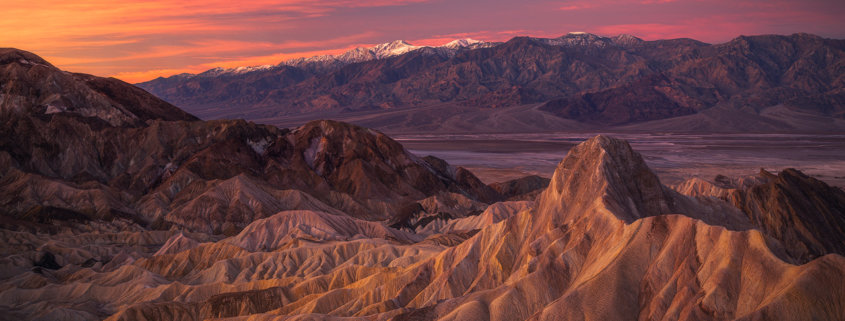



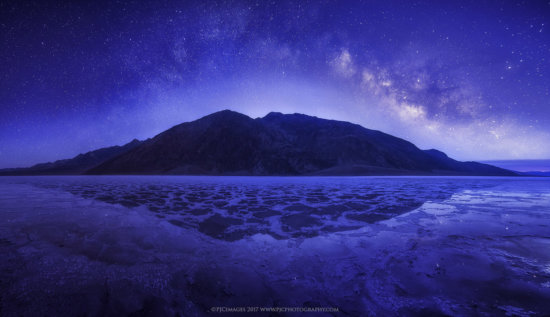


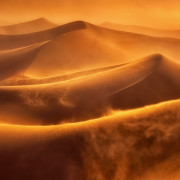

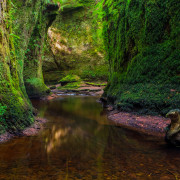
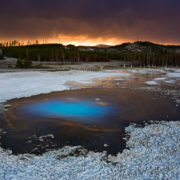




The camera lens is the most important thing on a camera and it is the main thing with which you can capture a perfect shot. So, for this one must know all the tips and tricks for this.